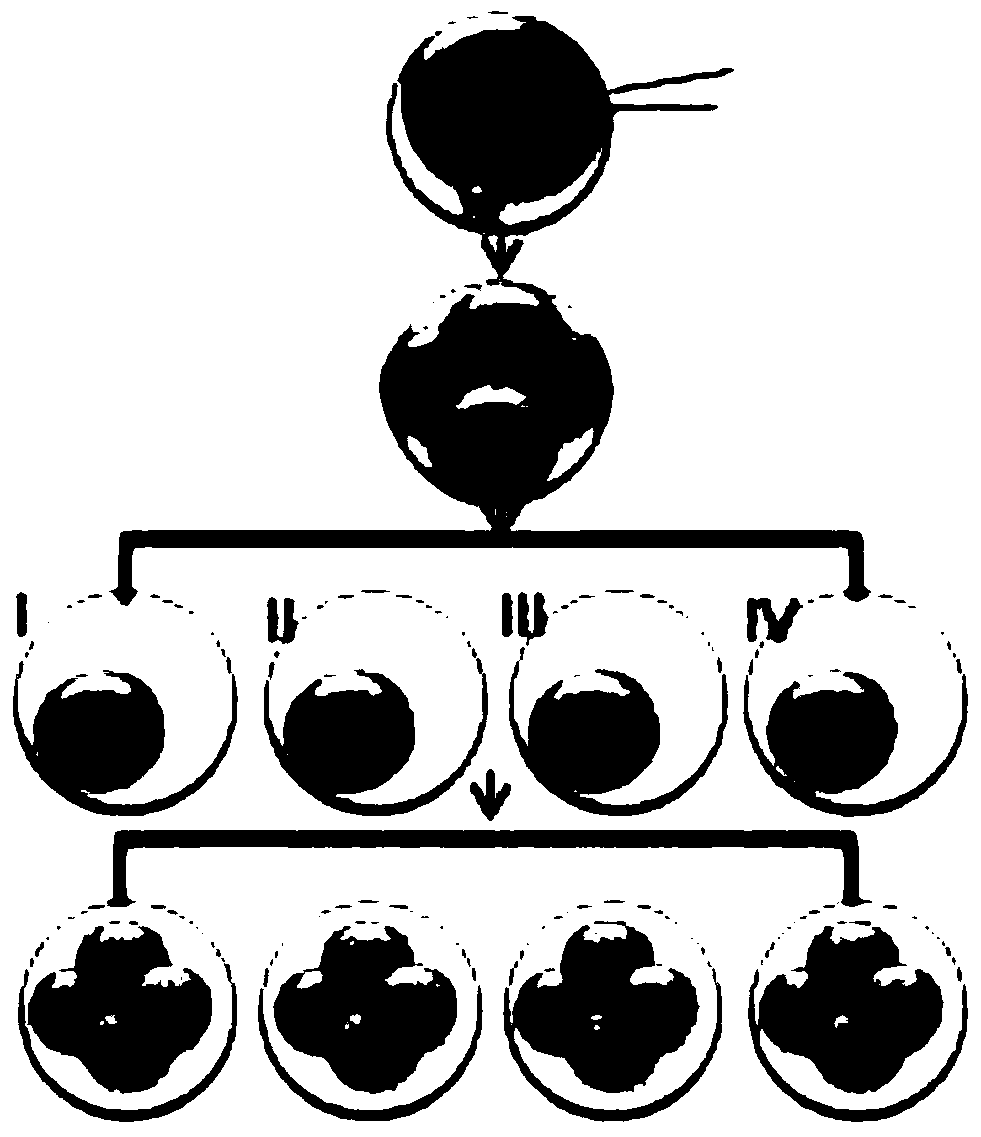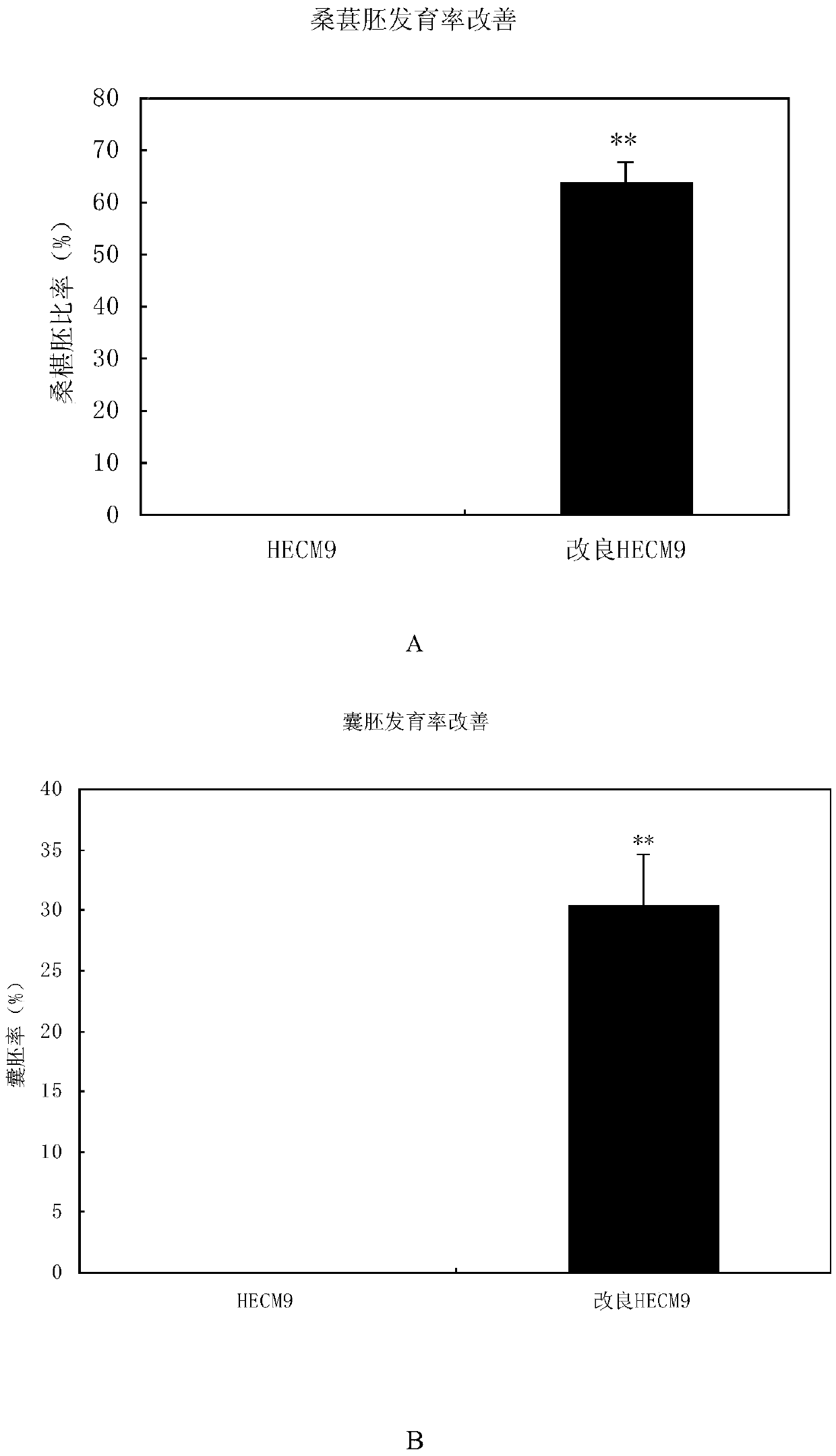Method and culture medium for culturing transgenic animal embryonic cells or transgenic animals
A technology for transgenic animals and embryonic cells is applied in the field of a method and medium for cultivating transgenic monkeys to achieve the effects of improving in vitro development and increasing the accuracy of gene modification
- Summary
- Abstract
- Description
- Claims
- Application Information
AI Technical Summary
Problems solved by technology
Method used
Image
Examples
Embodiment 1
[0059] Embodiment 1 transgenic process
[0060] Construction of CRISPR / Cas9 sgRNA vectors containing PINK1 gene and ASPM gene target sequences. The sgRNA expression vector contains a T7 promoter to control the expression of sgRNA, and can be inserted into a specific target sequence of 20bpsgRNA after digestion with BbsI restriction enzyme, the recognition site of the specific target sequence is located in the second exon of PINK1 gene, ASPM gene third exon and tenth exon. In order to screen the sgRNA sequences of PINK1 and ASPM genes capable of gene editing and with small off-target effects, the applicant used NCBI's Blast software to screen the PINK1 gene sequences of rhesus monkeys and the ASPM gene sequences of cynomolgus monkeys with low off-target effects and conforming to CRISPR / Cas9 binds to the target sequence site of the genomic feature (5'-G(19N)-NGG3') or (5'-CCN(19N)-C-3'), as shown in Table 1.
[0061] a. Chemically synthesize oligonucleotide chains and synthes...
Embodiment 2
[0078] Example 2 Isolation of single blastomeres
[0079] 1. Eggs obtained by superovulation were subjected to single sperm injection (ICSI) and after double pronuclei appeared in the embryo, fertilization was confirmed. 8-10 hours after single sperm injection, Cas9 / gRNA was injected into the cytoplasm of the fertilized egg.
[0080] 2. Culture in conventional HECM9 medium (not the modified medium used before blastomere isolation) for 1-2 days until the embryo develops to four cells, and then digest it with 0.5% (w / v) pronase for 45-60 seconds to remove Cellophane tape.
[0081] 3. Transfer the embryos with the zona pellucida removed to 0.05% trypsin drops, digest for 2-3 minutes, separate the four-cell embryos with the zona pellucida removed, and wash twice with HECM9 to eliminate residual trypsin on the blastomeres influences.
Embodiment 3
[0082] Example 3 Culture and Differentiation and Development of Single Blastomeres
[0083] 1. Simply put the blastomeres into the pre-made empty zona pellucida, transfer them to the modified HECM9 medium and culture them for 1-2 days to develop into 4 cells again.
[0084] (1) Conventional culture medium, i.e. traditional HECM9 medium, has adopted the formula shown in Table 2 in this exemplary embodiment;
[0085] (2) Improved HECM9 medium: 2 mmol of dextrose and 5 mmol of vitamin C were added to the formulation in Table 2.
[0086] The pH of the medium is PH7.1; the osmotic pressure is 285.
[0087] Culture conditions: the gas ratio is 75% nitrogen, 5% carbon dioxide, 20% oxygen, and the culture temperature is 37 degrees Celsius
[0088] Table 2. Traditional HECM9 medium formula
[0089] Element
mg / 100ml
PVA
10.0
Phenol red
1.0
CaCl 2 2H 2 o
28.0
MgCl 2 .6H 2 o
9.3
NaCl
664.0
KCl
22.3 ...
PUM
 Login to View More
Login to View More Abstract
Description
Claims
Application Information
 Login to View More
Login to View More - R&D
- Intellectual Property
- Life Sciences
- Materials
- Tech Scout
- Unparalleled Data Quality
- Higher Quality Content
- 60% Fewer Hallucinations
Browse by: Latest US Patents, China's latest patents, Technical Efficacy Thesaurus, Application Domain, Technology Topic, Popular Technical Reports.
© 2025 PatSnap. All rights reserved.Legal|Privacy policy|Modern Slavery Act Transparency Statement|Sitemap|About US| Contact US: help@patsnap.com



